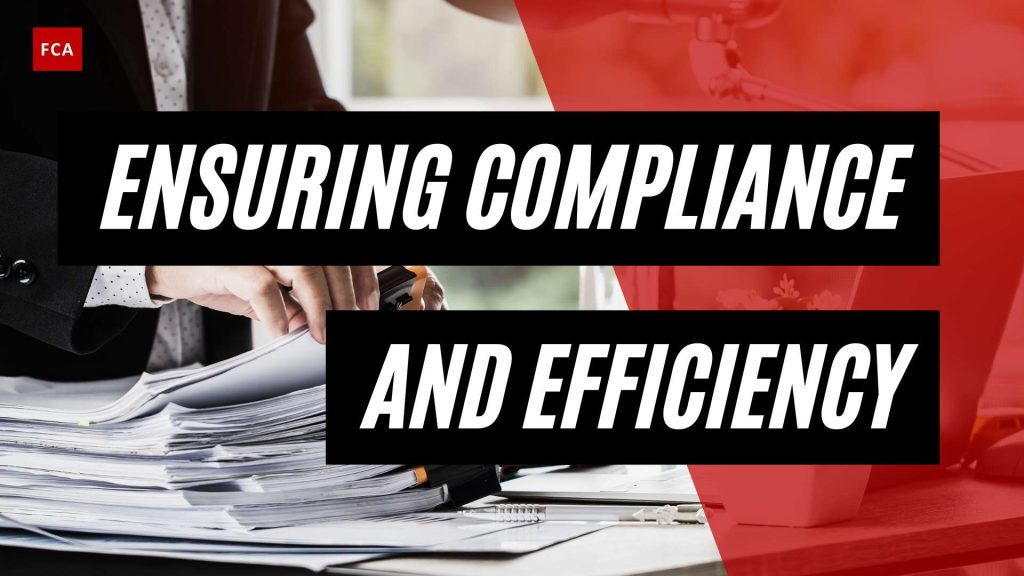Understanding AML Audit Programs
To ensure compliance and efficiency in anti-money laundering (AML) efforts, organizations implement AML audit programs. These programs play a crucial role in preventing financial crimes and protecting institutions from regulatory penalties. Understanding the importance and objectives of AML audits is essential for maintaining a robust compliance framework.
Importance of AML Audit Programs
Implementing an effective AML audit program is integral to meeting regulatory requirements and avoiding costly fines or reputational damage (Alessa Blog). AML audits should be conducted regularly to keep abreast of changes in the regulatory environment and ensure ongoing compliance (Alessa Blog). By conducting regular audits, organizations can identify and address any weaknesses or gaps in their AML processes, policies, and procedures. An AML audit program provides an opportunity to assess the effectiveness of an organization’s AML controls and make necessary improvements.
An AML audit program can enhance an organization’s overall risk management framework and help protect it from financial crimes. By conducting thorough audits, organizations can identify potential vulnerabilities and risks, allowing them to implement appropriate measures to mitigate these risks. Regular audits also demonstrate an organization’s commitment to AML compliance, which enhances its reputation among regulators, customers, and stakeholders.
Objectives of AML Audits
AML audits typically involve a comprehensive review of an organization’s policies, procedures, controls, and operations to ensure compliance with AML laws and regulations (Alessa Blog). The objectives of AML audits include:
-
Assessing Compliance: A primary objective of AML audits is to evaluate an organization’s compliance with applicable AML laws, regulations, and industry best practices. Auditors assess the effectiveness of policies, procedures, and controls in place to detect and prevent money laundering activities.
-
Identifying Weaknesses: AML audits aim to identify any weaknesses or deficiencies in an organization’s AML program. Auditors review the adequacy of risk assessments, transaction monitoring systems, customer due diligence processes, and employee training programs to identify areas for improvement.
-
Evaluating Controls: Auditors assess the effectiveness of an organization’s internal controls designed to prevent and detect money laundering. This evaluation includes reviewing the adequacy of segregation of duties, reporting mechanisms, and escalation procedures.
-
Testing Systems: AML audits involve testing transactions and controls to validate the accuracy and effectiveness of an organization’s AML systems. This testing ensures that transaction monitoring systems are properly identifying suspicious activities and generating accurate alerts.
-
Providing Recommendations: Based on the audit findings, auditors provide recommendations for enhancing the organization’s AML program. These recommendations may include improvements to policies, procedures, or systems, as well as additional training or resources needed to strengthen the program.
By understanding the importance and objectives of AML audit programs, organizations can proactively address compliance issues and strengthen their AML frameworks. A thorough and well-executed AML audit program is crucial for maintaining a robust and effective AML compliance program.
Components of an Effective AML Audit Program
An effective Anti-Money Laundering (AML) audit program consists of several key components that work together to ensure compliance and mitigate the risks associated with money laundering and financial crime. These components include policies and procedures, risk assessments, transaction monitoring, customer due diligence, and employee training.
Policies and Procedures
Comprehensive policies and procedures form the foundation of an effective AML compliance program. These written guidelines outline the organization’s commitment to AML compliance and provide a framework for addressing key AML compliance issues. Policies and procedures should cover a wide range of topics, including customer due diligence, suspicious activity reporting, recordkeeping, and compliance with relevant laws and regulations. By establishing clear guidelines, organizations can ensure consistency and accountability in their AML efforts (Flagright).
Risk Assessments
Conducting regular risk assessments is a critical component of an AML audit program. Risk assessments help organizations identify and understand the inherent risks associated with their customers, products, services, and geographic locations. By evaluating these risk factors, organizations can develop a risk profile specific to their institution. This risk profile serves as a guide for implementing appropriate controls and mitigation strategies to address identified risks. Risk assessments should be conducted periodically and updated as necessary, reflecting changes in the organization’s risk landscape.
Transaction Monitoring
Transaction monitoring is a vital component of AML audit programs. It involves the ongoing surveillance and analysis of customer transactions to detect and report potentially suspicious activity. AML auditors evaluate the effectiveness of transaction monitoring systems and processes to ensure they are capable of identifying unusual or suspicious transactions accurately. These systems should have appropriate parameters, thresholds, and scenarios to flag transactions that may indicate money laundering or other illicit activities. Regular testing and review of transaction monitoring processes help organizations identify any gaps or weaknesses in their systems.
Customer Due Diligence
Customer due diligence (CDD) is a crucial aspect of AML audit programs. It involves the collection and verification of customer information, assessing customer risk, and establishing risk-based controls for ongoing monitoring. CDD procedures should be implemented during the customer onboarding process and should be periodically re-evaluated, particularly when new relevant information is obtained. The focus should be on specific data points and risk factors to ensure that high-risk customers receive enhanced due diligence measures.
Employee Training
Training employees on AML policies, procedures, and best practices is essential for maintaining an effective AML audit program. Properly trained employees are crucial for the successful implementation of AML controls and the detection of suspicious activity. Training programs should cover topics such as recognizing red flags, understanding the organization’s AML policies, and reporting suspicious activity. Regular training sessions and updates ensure that employees stay informed about evolving AML risks and regulatory requirements. Effective training helps foster a culture of compliance within the organization and empowers employees to play an active role in combating money laundering.
By incorporating these components into their AML audit programs, organizations can enhance compliance efforts and reduce the risk of financial crime. Regular reviews, testing, and assessments of these components help identify areas for improvement and ensure that AML programs remain effective and up to date with regulatory expectations.
Conducting AML Audits
When it comes to AML compliance and ensuring the effectiveness of Anti-Money Laundering (AML) programs, conducting thorough and robust AML audits is crucial. These audits play a pivotal role in evaluating the adequacy of a firm’s AML program and its adherence to AML laws and regulations. In this section, we will explore the key steps involved in conducting AML audits, including audit planning, reviewing documentation and records, testing transactions and controls, and assessing the overall effectiveness of the AML program.
Audit Planning
The first step in conducting an AML audit is thorough audit planning. This involves defining the scope and objectives of the audit, identifying the key areas to be assessed, and establishing an audit timeline. The audit plan should be based on the AML audit checklist and the specific AML audit requirements applicable to the organization.
During the planning phase, auditors should also review relevant documentation, such as policies, procedures, risk assessments, and previous audit reports. This helps to ensure a comprehensive understanding of the organization’s AML program and identify any potential areas of concern.
Reviewing Documentation and Records
Once the audit plan is in place, the next step is to review documentation and records related to the organization’s AML program. This includes examining policies, procedures, and other relevant documentation to assess their compliance with regulatory requirements. Auditors should also review records of customer due diligence, transaction monitoring, and suspicious activity reporting to evaluate their effectiveness and adherence to AML policies and procedures.
By reviewing documentation and records, auditors can gain insights into the organization’s AML program, identify any gaps or deficiencies, and make recommendations for improvement.
Testing Transactions and Controls
To assess the effectiveness of an organization’s AML program, auditors need to test transactions and controls. This involves selecting a sample of transactions and conducting detailed testing to verify compliance with AML policies and procedures. The testing process may include reviewing transactional data, analyzing patterns, and investigating any red flags or anomalies.
Auditors should also evaluate the effectiveness of internal controls in place to detect and prevent money laundering activities. This includes assessing the adequacy of transaction monitoring systems, customer due diligence processes, and suspicious activity reporting mechanisms. By testing transactions and controls, auditors can identify weaknesses or gaps in the AML program and provide recommendations for enhancements.
Assessing AML Program Effectiveness
The final step in conducting an AML audit is assessing the overall effectiveness of the organization’s AML program. This involves evaluating the results of the audit, identifying areas of non-compliance or weaknesses, and making recommendations for remediation.
Auditors should assess whether the organization’s AML program aligns with regulatory requirements and industry best practices. They should also evaluate the organization’s responsiveness to previous audit findings and the implementation of recommended enhancements.
By assessing the AML program’s effectiveness, auditors play a critical role in enhancing the organization’s AML compliance efforts and mitigating the risk of financial crime.
To ensure objectivity and independence, AML audits should be conducted by individuals who are not directly involved in the day-to-day AML compliance function. This can be achieved through an internal audit team or by engaging external third-party auditors.
By following these steps, organizations can effectively conduct AML audits, identify areas for improvement, and strengthen their AML compliance efforts. Regular AML audits are essential to maintain regulatory compliance, mitigate financial and reputational risks, and protect against criminal activities.
Frequency and Independence of AML Audits
To ensure compliance and effectiveness, AML audits should be conducted regularly, keeping pace with the ever-evolving regulatory environment. Regular audits not only help organizations assess their AML compliance programs, but also provide an opportunity to identify and address any weaknesses or gaps. In this section, we will explore two important aspects of AML audits: risk-based audit frequency and the need for an independent audit function.
Risk-Based Audit Frequency
The frequency of AML audits is typically determined by a risk-based approach, taking into account the risk profile of the organization and the regulatory requirements that apply to it. Financial organizations, such as banks, broker-dealers, and other regulated entities, may have different audit frequency requirements based on their regulatory affiliations and classifications.
For example, self-regulatory organizations (SROs) often mandate annual AML audits for their members, such as broker-dealers who are members of the Financial Industry Regulatory Authority (FINRA). These audits serve as a comprehensive evaluation of the organization’s AML compliance program and its adherence to regulatory standards.
In addition to regulatory requirements, organizations should also consider their own risk assessments when determining the frequency of AML audits. High-risk areas, such as regions with higher money laundering risks or institutions dealing with high volumes of potentially suspicious transactions, may require more frequent audits to mitigate the associated risks.
The specific audit frequency should be outlined in the organization’s AML compliance program and be responsive to its risk profile. Regular assessments and adjustments to the audit frequency will help ensure that the program remains effective and aligned with the organization’s risk management objectives.
Independent Audit Function
An essential component of an effective AML audit program is the independence of the audit function. Independent testing, or auditing, is a fundamental principle of risk management in AML compliance. An independent audit function ensures that the evaluation of the organization’s AML compliance program is unbiased and objective.
The independence can be achieved through either internal or external auditors who are not directly involved in the day-to-day operations of the AML program. This independence helps maintain the integrity of the audit process and enhances the credibility of the audit findings and recommendations.
External auditors, such as certified public accounting firms, can provide an unbiased assessment of the organization’s AML compliance program. Internal auditors, while part of the organization, should have sufficient independence from the AML program to maintain objectivity.
The results of the AML audits, whether conducted internally or externally, should be reported to senior management and the audit committee. This reporting ensures that the findings are appropriately addressed and that senior management is aware of any deficiencies or weaknesses in the AML compliance program (Flagright).
By conducting AML audits at a frequency that aligns with the organization’s risk profile and ensuring the independence of the audit function, organizations can enhance their AML compliance efforts, identify areas for improvement, and mitigate the risks associated with money laundering and financial crime.
Consequences of Inadequate AML Programs
Having an inadequate Anti-Money Laundering (AML) program can have serious consequences for organizations. It is essential to understand the potential risks and repercussions associated with poor AML practices. Here are some of the key consequences that can arise from inadequate AML programs:
Financial Penalties
Organizations with deficient AML programs can face significant financial penalties. Regulatory bodies such as the Financial Industry Regulatory Authority (FINRA) and the Securities and Exchange Commission (SEC) have imposed substantial fines related to AML deficiencies. In 2021 alone, FINRA imposed a total of $26 million in fines, while the SEC ordered $8 billion in disgorgement and penalties primarily due to AML violations. These penalties can have a severe impact on an organization’s bottom line and financial stability.
Reputational Damage
Inadequate AML programs can lead to reputational damage and loss of trust among clients and stakeholders. When an organization is associated with money laundering or other illicit activities, its reputation can be seriously tarnished. Negative publicity and media scrutiny can have long-lasting effects on an organization’s brand image and customer loyalty. Rebuilding trust and recovering from reputational damage can be a challenging and time-consuming process.
Increased Risk of Criminal Activity
One of the most significant consequences of an inadequate AML program is the increased risk of becoming a target for criminal activity. Money laundering, fraud, and terrorist financing activities are serious concerns for organizations with poor AML systems and controls. Without proper safeguards in place, organizations may unknowingly facilitate criminal transactions, which can have severe legal, financial, and ethical implications. It is crucial for organizations to actively mitigate these risks through robust AML practices.
To avoid these consequences, organizations must prioritize the development and implementation of effective AML programs. This includes conducting regular AML audits and compliance reviews to ensure adherence to regulatory requirements. By investing in strong AML frameworks, organizations can safeguard themselves against financial penalties, reputational damage, and the increased risk of criminal activity.
AML Audit in Specific Industries
AML (Anti-Money Laundering) audit programs are crucial for ensuring compliance with regulatory requirements and preventing money laundering activities across various industries. In this section, we will explore the specific considerations for conducting AML audits in financial institutions and the legal industry.
AML Audit in Financial Institutions
Financial institutions, such as banks, credit unions, and investment firms, play a vital role in the global financial system and are primary targets for money laundering activities. Consequently, they are subject to stringent AML regulations and are required to implement robust AML programs.
AML audits in financial institutions focus on evaluating the effectiveness of AML policies, procedures, and controls in detecting and preventing money laundering activities. Key areas of review include:
-
Customer Due Diligence (CDD): Financial institutions are expected to have comprehensive CDD processes in place, including customer risk assessments, customer identification procedures, and ongoing monitoring of customer activity. AML audits assess the adequacy and adherence of these processes to regulatory requirements.
-
Transaction Monitoring Systems: Financial institutions are required to have transaction monitoring systems that effectively detect and report suspicious transactions. AML audits review the design, implementation, and performance of these systems to ensure they are accurate, efficient, and capable of identifying potential money laundering activities.
-
Compliance with AML Laws and Regulations: AML audits assess whether financial institutions comply with applicable AML laws and regulations, such as the Bank Secrecy Act (BSA) in the United States or the Money Laundering Regulations in the United Kingdom. Auditors review documentation, records, and reporting practices to ensure compliance and identify any gaps or deficiencies.
By conducting regular AML audits, financial institutions can identify weaknesses or gaps in their AML programs, demonstrate their commitment to combating financial crimes, and safeguard the integrity of the financial system. To ensure the effectiveness of the audit program, financial institutions should follow established processes, assign experienced auditors, and obtain comprehensive audit reports from the AML department (Sanction Scanner).
AML Audit in the Legal Industry
The legal industry also faces increasing scrutiny regarding AML compliance. Law firms are often involved in high-value transactions or provide services that can be exploited for money laundering purposes. Consequently, it is crucial for law firms to establish comprehensive AML programs and consider conducting AML audits.
New AML guidelines in the legal industry emphasize the importance of evaluating whether to establish an independent audit function, even if not explicitly required by law, to ensure compliance with AML regulations. The Financial Conduct Authority (FCA) and the Joint Money Laundering Steering Group (JMLSG) expect businesses in the UK to assess the necessity of an independent audit function, reinforcing its importance.
AML audits in the legal industry focus on evaluating internal controls, policies, and procedures for AML compliance. Key areas of review include:
-
Risk Assessments: Law firms need to conduct thorough risk assessments to identify and mitigate AML risks associated with their clients and services. AML audits assess the adequacy and effectiveness of these risk assessments in identifying and managing potential money laundering risks.
-
Transaction Monitoring: Law firms are expected to monitor client transactions for suspicious activities. AML audits evaluate the implementation and effectiveness of transaction monitoring processes, ensuring they are in line with regulatory requirements and best practices.
By conducting AML audits, law firms can demonstrate their commitment to AML compliance, protect their reputation, and mitigate the risk of involvement in money laundering activities. A robust audit program helps identify areas for improvement and provides recommendations to strengthen AML compliance efforts in the legal industry.
In summary, AML audits play a crucial role in ensuring compliance with AML regulations across various industries, including financial institutions and the legal industry. By conducting regular audits and addressing any identified deficiencies, organizations can enhance their AML programs, mitigate money laundering risks, and contribute to the overall integrity of the financial system.








